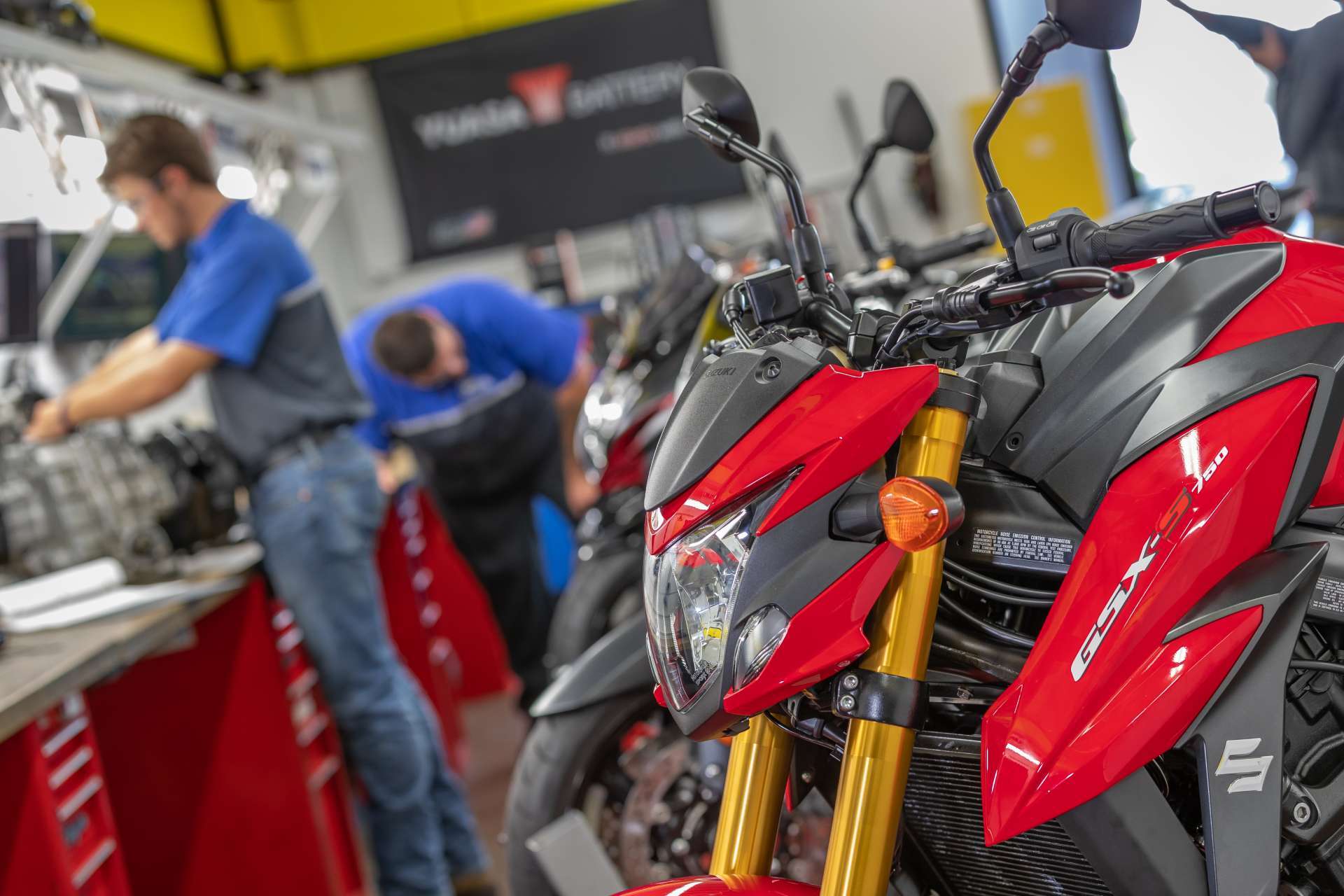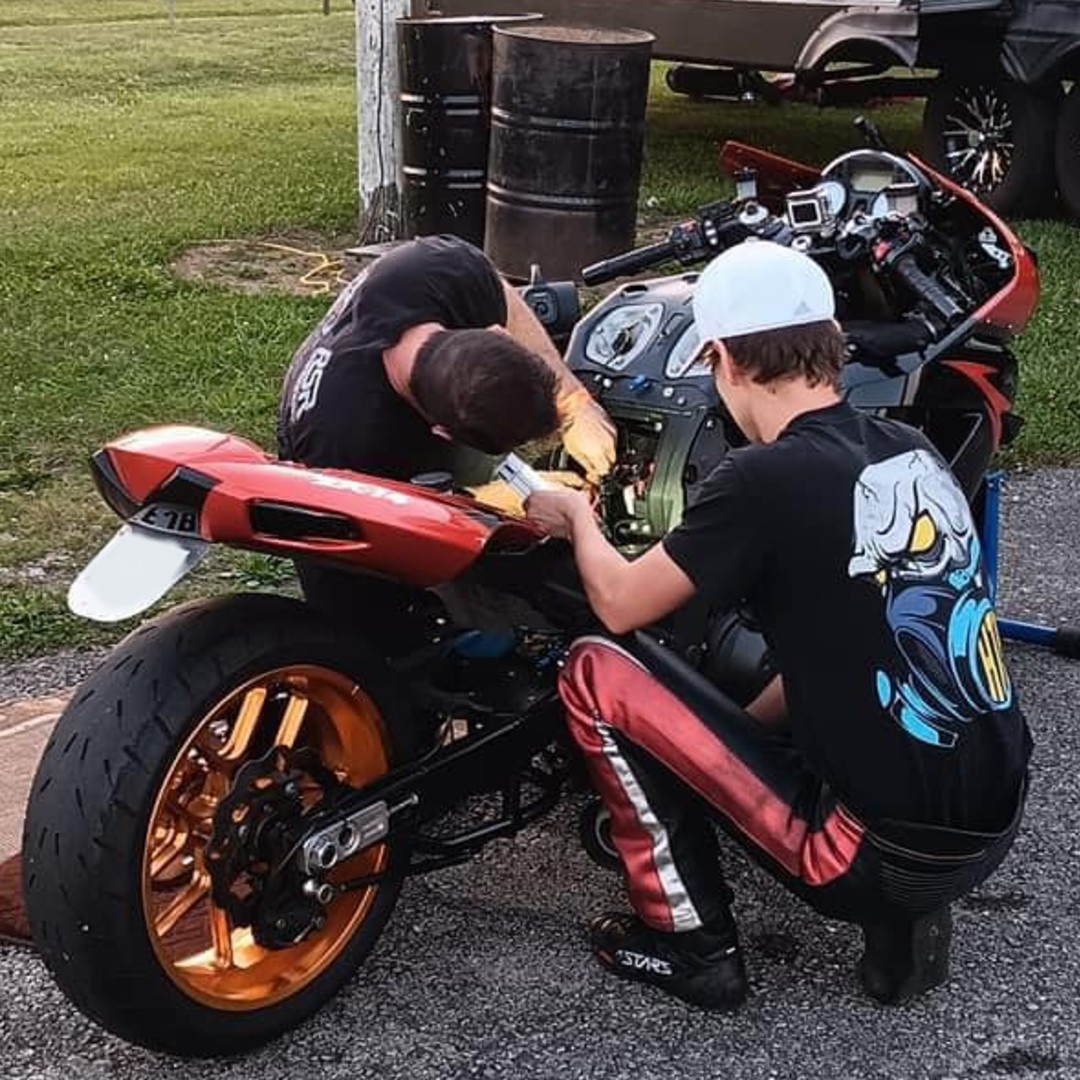Fixing Common Motorcycle Problems: An Ultimate Guide
Posted by Schnitz Racing on 23rd Sep 2025
Whether you are a weekend rider or a professional racer, all riders experience mechanical problems during their rides, often when you least expect them. Whether you are the owner of a high performance racing motorcycle, a vintage classic or a new day to day road bike, it is important to have an extensive knowledge of how to attend to and repair the common problems faced on your motorcycle.
Introduction
Motorcycle maintenance and repair knowledge separates confident riders from those constantly dependent on expensive professional services. While some issues require specialized tools and expertise, many common problems can be diagnosed and resolved with basic mechanical knowledge, proper tools, and quality replacement parts.
Once motorcycles started becoming more reliable, there were still predictable failure points and wear patterns that every rider should be educated on. Whether it's electrical issues that come with age on older bikes, or fuel system problems with modern fuel-injected bikes, identifying symptoms early and implementing the right fixes is one way to keep minor problems from becoming major disasters.
Common Motorcycle Problems & How to Fix Them
1. Stalling a Motorcycle Engine During Use
Engine stalling during operation represents one of the most frustrating and potentially dangerous motorcycle problems. That is usually due to the lack of fuel delivery, a failure of the ignition system, or if there are restrictions in the air intake that causes the combustion to be affected.
Fuel System Diagnosis: Begin by checking fuel flow from the tank to the carburetor or fuel injectors. First see if fuel is flowing to the carb or throttle body. To test for adequate fuel flow, disconnect the fuel line at the carb and open the petcock. Low flow indicates a blocked fuel filter, a clogged petcock screen, or a dirty fuel tank that needs to be cleaned.
Carburetor Issues: Dirty or incorrectly adjusted carburetors cause random fuel feeding and stalling. Clean and unclog carburetor jets, regulate float levels, and check to see if your choke is working.
Ignition System Problems: Faulty spark plugs, ignition coils, or timing lapses, result in misfiring and stalling. Test spark plugs for condition, gap and spark. Replace aged plugs and watch the engine's timing per your vehicle's manual.
Air Filter Restrictions: Clogged air filters will deprive an engine of necessary air flow, which will cause rich running and stalling. Frequently clear or change your air filter, particularly in dusty conditions or following long rides.
2. Motorcycle Brake Problems
The brake system is a critical part of your motorcycle and its reliability is without doubt one of the first things each rider wants to really feel assured about. Common brake problems include spongy lever feel, reduced stopping power, brake drag, and complete brake failure.
Spongy Brake Feel: Air in brake lines creates compressible bubbles that reduce braking effectiveness and create spongy lever or pedal feel. Bleed brake systems completely, starting with the caliper furthest from the master cylinder.
Brake Pad Wear: Worn brake pads will reduce stopping power and if too worn, damage rotors. Inspect pads regularly and replace them as material wears. Some of the high-quality motorcycle accessories online are performance brake pads which not only provide better stopping power but can also last longer.
Warped Rotors: Heat cycling and heavy braking may cause rotors to become warped resulting in erratic brake feel and poor stopping power. Use a dial indicator to measure rotor run-out and discard any rotors out of manufacturer’s specs.
Brake Fluid Contamination: Old or contaminated brake fluid absorbs moisture, reducing boiling point and causing brake fade. Replace brake fluid according to maintenance schedules, typically every two years, using only specified fluid types.
3. Electrical Problems Associated with Motorcycles
Modern motorcycles feature more complex electrical systems which in many cases are the heart of the bike; fuel injectors, ignition, lights and accessories all rely on a good power source on the bike.
Charging System Failures: If your batteries are weak, your lights are dull or you’re having trouble starting the engine, these are signs that you might have problems with your charging system. Check the battery voltage with the engine off (12.6+ volts) and when the engine is running (13.5-14.5 volts). Replace failed voltage regulators or alternators when necessary.
Wiring Harness Problems: Bad connections, exposed wires, and loose connectors result in intermittent electrical problems which can be the bane of any mechanics existence. Check wiring harnesses for damage, clean all connections with electrical contact cleaner with dielectric grease for further protection.
Fuse and Relay Issues: Blown fuses suggest an overcurrent condition and you should investigate before changing out the fuse. Inspect for shorted or overloaded circuits. Change relays out if you hear clicking without the proper relays operating.
Ground Connection Problems: Poor ground connections cause electrical bugs, including dim lights, weak spark, and wonky gauges. Clean and verify secure ground connection, especially to the engine and frame.
4. High Fuel Consumption by the Motorcycle

The excessive fuel consumption is an issue for operating costs, as well as range between fill-ups, a concern for any motorcycle that tours or is used for commuting. There are many reasons contributing to low gas mileage.
Carburetor Tuning Issues: Rich fuel mixtures waste fuel and provide little performance benefit. Refer to manufacturers specifications for main jets, needle positions and idle mixtures. Bear in mind altitude and temperature indicates differences in ideal tune.
Air Filter Restrictions: Dirty air filters cause rich running conditions as the engine compensates for reduced airflow. Clean or replace air filters regularly and ensure proper filter sealing and to prevent air leaks.
Engine Mechanical Problems: Worn pistons, rings, or valves decrease the efficiency of the engine and increase fuel consumption. A compression test the condition of the engine and rectify any mechanical problems before they get worse.
Riding Habits: Rapid acceleration, high speeds, and unnecessary idling have strong effects on fuel consumption. Accelerate smoothly and avoid full-throttle acceleration and extended operation at high RPM.
5. Strong Vibrations at Top Speed
Too much vibration when you're running fast means you've either got out of balance wheels, stale damping or engine mounts going south, all of which can have a big impact on handling and rider comfort. Correct diagnosis is a safeguard against possible hazards.
Wheel Balance Problems: Wobbly wheels cause vibrations that increase with acceleration. Balance wheels professionally or apply wheel weights to remedy imbalances. Inspect tire wear and replace if signs of uneven wear exist.
Suspension Wear: Worn wheel bearings, steering head bearings, or suspension bushings will cause vibratons and adversely affect the handling. Check bearings for play or roughness and replace if necessary. Quality replacement parts for suspension components are obviously needed, along with the appropriate torque specs.
Engine Mount Issues: Worn or loose engine mounts allow the engine to move too much and generate vibrations into the frame. Check for cracking or separation of rubber mounts and replace any worn parts.
Drive Chain Problems: Chains that are out of adjustment or worn cause vibrations and damage sprockets. Keep the correct tension and lubrication, and replace chains and sprockets as sets to ensure proper engagement.
6. Bad Throttle Response
Poor throttle response affects both performance and rideability, when the motorcycles simply don't want to respond to the rider's input. This usually relates to fueling, induction or ignition timing problems.
Carburetor Synchronization: Multiple-carburetor motorcycles require proper synchronization to ensure equal fuel delivery to all cylinders. Use carburetor synchronization tools to balance airflow and fuel delivery across all carburetors.
Fuel Injection Problems: Modern fuel-injected bikes may experience throttle response issues due to dirty injectors, bad throttle position sensors or mapping problems can all cause poor throttle response. Service injectors and ensure the sensor is operating.
Air Intake Leaks: Vacuum leaks between carburetors and the intake cause lean conditions and poor throttle response. Replace intake manifold gaskets and ensure proper clamp tightness on rubber intake boots.
Ignition System Timing: Incorrect ignition timing affects engine response and performance. Verify timing according to manufacturer specifications and adjust as needed. Consider upgrading to performance ignition components for improved response.
7. Failure of Alternator
When the alternator does fail, motorcycles rely solely on the battery, resulting in reduced riding distances and compromising the operation of the electrical systems. Knowing the alternator diagnosis and replacement process may prevent you from being stranded.
Testing Alternator Output: Use a multimeter to test your alternator at different RPM’s. Most motorcycle alternators will be putting out 13.5-14.5 volts at 2000+ RPM. Weak electrical systems often need a change in the alternators.
Stator Coil Problems: Internal stator coil failures cause reduced or no charging output. Check stator resistance according to the service manual for specifications, if not replace stator.
Voltage Regulator Issues: Faulty voltage regulators can overcharge or undercharge the battery, also resulting in damage to the battery and electrical equipment. Check the operation of the regulator and replace if the output voltage does not meet the above specifications.
8. Wear out of Gearbox
Worn transmissions cause poor shift quality and transmission damage if not maintained. Regular maintenance and proper riding techniques extend transmission life significantly.
Gear Oil Maintenance: Replace transmission oil as per manufacturers recommendations with recommended oil grades. Dirty or worn out oil causes gear wear to speed up and shifting quality to be compromised.
Clutch Adjustment: Improperly adjusted clutches cause incomplete disengagement that damages transmission components. Maintain proper clutch cable or hydraulic system adjustment according to specifications.
Shift Fork Wear: Worn shift forks cause poor gear engagement and transmission jumping out of gear. Replace components that are worn and correctly align the fork during the installation.
Synchronizer Problems: Synchronized transmissions can cause stiff shifting especially if synchros are worn. Fix this issue before it becomes a transmission problem and before it destroys the transmission system.
9. Failure of the Clutch
Clutch problems affect power transfer from engine to transmission and can strand riders if failure occurs completely. Understanding clutch operation and maintenance prevents most failures.
Clutch Cable Maintenance: Cable-operated clutch systems must be adequately lubed and adjusted. Replace worn out cables before failure happens and check out good free play at the lever.
Hydraulic Clutch Systems: It's necessary to replace fluids and perform air bleeding of their hydraulic clutches occasionally. Inspect master and slave cylinder for leaks and replace seals if worn.
Clutch Plate Wear: When the friction plates become worn, the clutch begins to slip under load and is unable to properly transfer power. Replace clutch plates when thickness falls below specifications or if burning odors occur.
Pressure Plate Problems: Deformed or damaged pressure plates result in unequal clutch engagement and wear plates prematurely. Use friction plates instead of pressure plates for best performance.
10. Mechanical Problem of the Engine
Engine mechanical problems range from minor issues like worn gaskets to major problems requiring complete rebuilds. Early diagnosis prevents minor problems from becoming major failures.
Compression Testing: Low compression indicates worn pistons, rings, or valves that affect performance and reliability. Perform wet and dry compression tests to determine wear locations.
Valve Adjustment: Incorrect valve clearances affect engine performance and can cause valve damage. Check and adjust valve clearances according to maintenance schedules using proper feeler gauges.
Gasket Leaks: Leaks from gaskets in the engine can also have annoying consequences, with oil escaping and even internal pressure signals when the gaskets have worn down. Replace leaky gaskets as soon as possible and research the root cause of gasket failure.
Timing Chain/Belt Maintenance: Worn timing components cause poor engine performance and potential valve damage. Timing chains or belts should be replaced based on maintenance intervals and not mileage alone.
Preventive Maintenance Tips
As with a car, regular maintenance can prevent most of the common motorcycle problems and help extend the service life. Establish regular maintenance plans for all significant structures before trouble emerges. Adhere to manufacturer recommended service intervals strictly, but consider more frequent service at least for the severe service conditions of racing, dust, or stop and go driving. Quality replacement parts and recommended fluids must be used to keep its motorcycle in good operating condition.
When to Seek Professional Help

While many motorcycle repairs can be performed by knowledgeable owners, certain problems require professional expertise and specialized tools.
Complex Diagnostics like modern fuel injection and ABS systems require specialized diagnostic equipment beyond most home workshops. Brake system repairs, suspension work, and steering head service directly affect rider safety. If you're uncertain about procedures or lack proper tools, seek professional repair.
Major engine work is another area that requires specialized knowledge, precision measuring tools, and machine shop services. Unless you have extensive experience, leave engine rebuilds to qualified professionals.
Conclusion
Successfully maintaining and repairing motorcycles requires combining mechanical knowledge with systematic diagnostic approaches and quality replacement parts. Whether you're maintaining a weekend touring bike or preparing racing machines that demand premium motorcycle race parts, understanding common problems and their solutions keeps you riding safely and reliably.
The key to successful motorcycle ownership lies in proactive maintenance, early problem recognition, and knowing when to tackle repairs yourself versus seeking professional help. By having the right information and purchasing quality bmw motorcycle parts online from reliable suppliers, most of the common issues can be avoided or fixed properly.



